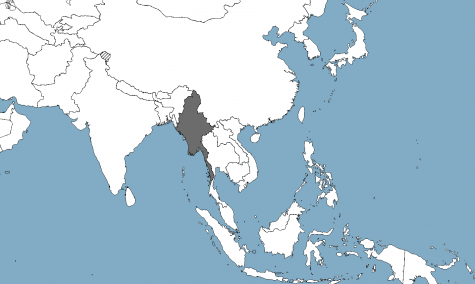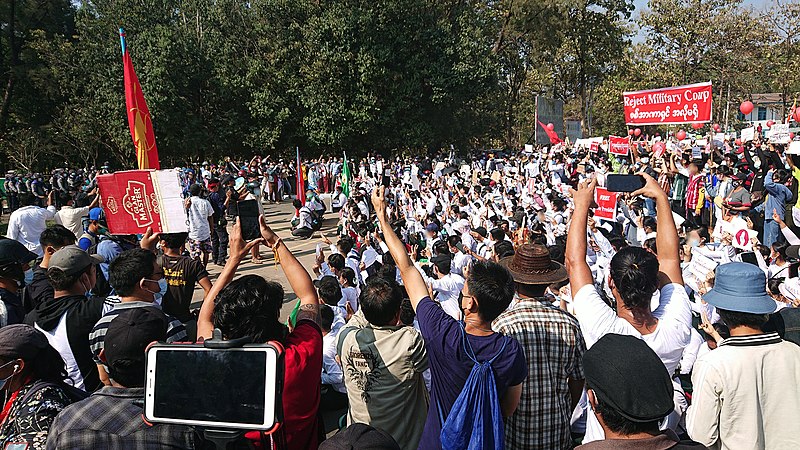The Myanmar Coup: An Analysis
An overview of the coup in Myanmar and its implications.
On February 1st, 2021, State Counsellor Aung San Suu Kyi of Myanmar was arrested and removed from her elected position by the Tatmadaw, otherwise known as the Armed Forces of Myanmar, after the counsellor’s political party, the National League for Democracy, won an election in a landslide. As a result, a stratocracy which is a government-controlled by the military, was established, with Commander-in-Chief of Defense Services Min Aung Hlaing being made the country’s de facto leader.

To understand how and why the coup d’état took place in Myanmar, we first must understand the history of the country. In 1948, Myanmar, or Burma at the time, was granted independence from the British Empire, with Burmese statesman U Nu becoming the country’s first Prime Minister. Although Nu relinquished his position in 1956, his party won the Burmese General Election in 1960, placing him back in power. However, the fruits of the election were short-lived. In March of 1962, a coup d’état took place and a stratocracy was established as a result of civilian unrest.
Since 1962, the military has more or less controlled Myanmar. However, the government decided to host free elections in 1990. The National League for Democracy won a large majority of seats in the government as a result of this election. Instead of handing over power to the newly elected government, the military junta rejected the results of the election. Aung San Suu Kyi, who had been placed under house arrest in 1989, would continue to be placed under house arrest for several years at a time. In November of 2010, the military-backed Union Solidarity and Development Party questionably declared victory in the country’s first election since 1990. Soon thereafter in 2011, the military junta was officially disbanded and Suu Kyi was released from house arrest.

In November of 2015, Suu Kyi and the National League for Democracy won a large majority of seats in Myanmar’s parliament. In 2016, she was made State Counsellor. Once again in early 2021, the National League for Democracy won general elections in a landslide, resulting in a loss for Union Solidarity and Development Party, the political party that the Tatmadaw backed. Perhaps as a result of the nation’s long history of unrest and military-led governments, the Tatmadaw successfully staged a coup d’état, declared a state of emergency, and put General Min Aung Hlaing in power on February 1st, 2021. The Tatmadaw arrested Aung Suu Kyi for illegally importing walkie-talkies, publishing “alarming” information, and violating COVID-19 restrictions.
The coup has sparked endless protests across Myanmar in opposition to the military takeover. According to npr.org, at least 18 people have been killed in the protests on March 3rd alone. In the past two months, the military has declared martial law several times in various parts of the country.

Several countries and organizations across the globe have condemned the military takeover, including the United States, Canada, Australia, Japan, and the European Union. Countries including India, Pakistan, South Korea, and Bangladesh have additionally expressed “deep concern” with the coup. Some countries have pushed for United Nations involvement, including the involvement of the U.N. Security Council and the U.N. Human Rights Council, however no decisive action has taken place yet. As reported in a CNA YouTube video, the Myanmar ambassador to the United Nations, Kyaw Moe Tun, asked the United Nations General Assembly and the international community to “use any means necessary to take action against the Myanmar military and to provide safety and security for the people of Myanmar” on February 26th. Tun further added, “we need the strongest possible action from the international community to immediately end the military coup, to stop oppressing the innocent people, to return the state power to the people, and to restore democracy”. In the same meeting, the United States ambassador to the United Nations, Linda Thomas-Greenfield, said, “The United States continues to strongly condemn the military coup in Myanmar… We stand with the millions of people in Myanmar who have displayed courage and determination to reject this military coup.” On February 10, President Joe Biden declared his intentions to freeze one billion dollars in Myanmar government funds that were held in the United States, reported by MSN News. President Biden has already signed an executive order to put sanctions on those involved in the coup.
The implications of the takeover are still unclear. What will happen next? Perhaps the protestors will be able to overwhelm the military forces and put Aung Suu Kyi back in the government. Perhaps the United Nations will step in. Possibly, the military junta will manage to suppress the protests continue its rule. Maybe history will repeat itself and in twenty years’ time, free elections will be finally held again only to result in another military takeover.




